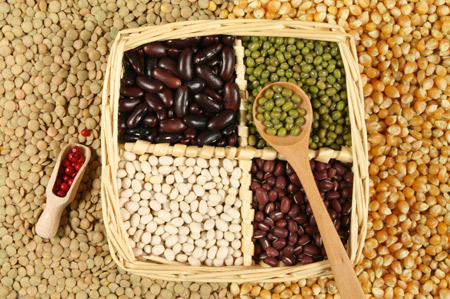 (AgriMoney) – Soybean prices performed relatively firmly in 2013, falling a little over 6% in Chicago, held up by robust demand which meant that even strong South American and US harvests could not rebuild world inventories too much.
(AgriMoney) – Soybean prices performed relatively firmly in 2013, falling a little over 6% in Chicago, held up by robust demand which meant that even strong South American and US harvests could not rebuild world inventories too much.
But that could change in 2014, with ideas of another strong South American harvest, and hefty US plantings too.
Will that rebuild inventories enough to allow buyers to relax, and bank on much lower prices?
Leading brokers give their views.
Bank of America Merrill Lynch
“US biodiesel production from soyoil is growing rapidly, albeit from a low base, and we expect this trend to continue.
“This source of consumption growth will likely lend support to soybean prices near term, until news of new bumper soybean crops from significantly expanded acreage in first Latam and then perhaps the US hit the market next year.
“Ample production leaves 2013-14 ending stocks up 17% year on year to 70m tonnes.
“Thus the global soybean market is relatively well supplied. However, we cannot rule out the risk of price spikes due to US stocks still being at multi-year lows.
“If Latam plantings expand as strongly as we expect, or northern hemisphere producers plant large amounts of soy in the spring, stocks could go rise further at the end of the 2014-15 market year, creating downside risk to prices.”
Commerzbank
Brazil could find itself more or less level pegging with the US in soybean production if it equals the previous year’s record of 88m tonnes, in the absence of adverse weather conditions over the next few weeks.
“In Argentina too… more soybeans are expected to be harvested in 2013-14 than ever before.
“In view of the relative price performance, the decline in US soybean acreage mentioned in the US Department of Agriculture’s long-term forecast is unlikely to materialise in 2014-15. Indeed, a larger acreage can be expected.
“Against the backdrop of expectations of a global surplus in 2013-14 and a positive outlook for the 2014 US harvest, a feeling of scarcity is unlikely to become established on the soybean market in the foreseeable future, even with the global stocks/consumption ratio remaining low.”
Goldman Sachs
“Last winter’s record South American harvest and this summer’s still large US soybean harvest have set the threshold for [soybean production] disappointment fairly high with a large weather shock necessary in South America to tighten global soybean supplies next spring.
“[Under a conservative production scenario] we find that combined March 1 2014 soybean stocks in the US, Brazil and Argentina, which account for more than 80% of global soybean production and exports, would still reach 158.6m tonnes.
“While below the record high stock level of 177.6m tonnes, this level of soybean inventory in the three major export origins remains historically elevated.
“Assuming normal weather conditions in coming months, we expect the prospect of record large South American soybean production as well as large US soybean/soymeal export commitments will be both bearish for soybean prices relative to the current forward curve as well as maintain the CBOT soybean and soymeal curves in backwardation to slow US exports.”
Morgan Stanley
We expect both Brazil and Argentina to produce record 2013-14 soybean crops, as a soybean/corn [price] ratio approaching 4:1 in some locations encourages record soybean acreage.
“We model production of 86.94m tonnes in Brazil and 55.92m tonnes in Argentina, up 6% and 13% year on year respectively, on planted acreage increases of 5% and 6% year on year.
“Current prices are signaling US farmers to plant record soybean acreage in 2014-15. Our initial projection of US 2014-15 plantings pegs soybean acreage at a record-high 80.5m acres, up 5% year on year.
“Above-average global stocks should limit the need to add South American acreage [in 2014-15] for the first time since 2006-07. In fact, soybean acreage could stand to fall as much as 4% YoY, before combined Brazilian, Argentine and US S/U fell year on year.
“At current currency exchange rates, US soybean prices could fall as low as $9.80 a bushel before Brazilian farmers would be incentivised to reduce plantings.”
University of Illinois
“Sales of US soybeans for export during the 2013-14 marketing year have been extremely large.
“On the surface, it appears that either exports will exceed the USDA projection or that prices will have to increase to slow the pace of consumption.
“With year-ending stocks of US soybeans already forecast at a near-pipeline supply of 150 million bushels, there is little room for exports to exceed the current projection. Exports can be measurably larger only if the 2013 US crop was larger than the current forecast the domestic crush is smaller than forecast.
“A third alternative is that China will cancel some purchases of US soybeans if the South American crop turns out to be large and prices are lower and/or the current bird flu situation there worsens and reduces the demand for soymeal.
“Developments over the next few weeks will be critical for the direction of old-crop soybean prices. A combination of export sales cancellations, a larger US crop estimate, or a larger South American crop estimate would likely trigger a lower price trend.
“Without such developments, current high prices would likely persist a while longer in order to finish the rationing of old crop supplies.”




